family

 Since buying their family farm, my nephew, Eric Parmely and his wife, Ashley have had a number of daily duties that are different from people who dwell in the cities and towns. Of course, there are the normal duties that go with a farm…everything from feeding animals, helping with births, gathering eggs, taking care of the land, and repairing fences. This year has been a little unusual in that like many areas across the United States, Wyoming has received an extra-large amount of snow, meaning that the rural roads, which are not always plowed by the county or state, are left buried in 3 to 6 feet of snow. That means that nothing is moving, and those people who happen to have tractors, will likely have to go out and help with the “digging out” process. That was the position Eric and Ashley found themselves in. One storm found them waiting for 3 days to get out, and then it only happened because Eric got out and became a snowplow. Of course, the whole thing didn’t totally hurt Eric’s feelings,
Since buying their family farm, my nephew, Eric Parmely and his wife, Ashley have had a number of daily duties that are different from people who dwell in the cities and towns. Of course, there are the normal duties that go with a farm…everything from feeding animals, helping with births, gathering eggs, taking care of the land, and repairing fences. This year has been a little unusual in that like many areas across the United States, Wyoming has received an extra-large amount of snow, meaning that the rural roads, which are not always plowed by the county or state, are left buried in 3 to 6 feet of snow. That means that nothing is moving, and those people who happen to have tractors, will likely have to go out and help with the “digging out” process. That was the position Eric and Ashley found themselves in. One storm found them waiting for 3 days to get out, and then it only happened because Eric got out and became a snowplow. Of course, the whole thing didn’t totally hurt Eric’s feelings, 
 because he loves his tractor, and this was a new way to use it. Men and their toys…right? The main thing is that they were finally able to get out and get back to the business of life.
because he loves his tractor, and this was a new way to use it. Men and their toys…right? The main thing is that they were finally able to get out and get back to the business of life.
Eric is a mechanic by trade and loves his work. That means that tinkering with anything mechanical is not really work. Getting on the farm equipment is that way exactly. When they bought the tractor, there were many evenings spent in the barn with his father-in-law, Albert Eighmy, son Bowen Parmely, and often Ashley and their daughters, Reagan, Hattie, and Maeve all watching as the work was done to this fantastic piece of equipment, so that it would be ready to be a regular piece of the menagerie of farm equipment necessary to run a farm. Bowen especially loves the tractor, because, being a boy, it seems to run in his blood. He is his daddy’s boy. The girls like to ride on it too, but they aren’t as interested in the mechanical side of things as Bowen is.
Eric has become a wonderful family man…a great husband and daddy. He and Ashley are doing the things 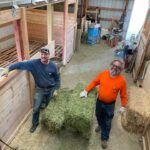
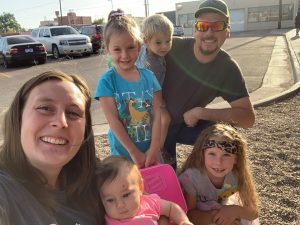 necessary to raise responsible, decent, and well-rounded kids. Their kids are homeschooled, which is becoming more and more necessary these days, given the radical activities in the school system now. And the kids are happier too. Ashley teaches school, and Eric brings home the bacon…back to old fashioned values. Not every family is run this way, but it works very well for them. Today is Eric’s birthday. Happy birthday Eric!! Have a great day!! We love you!!
necessary to raise responsible, decent, and well-rounded kids. Their kids are homeschooled, which is becoming more and more necessary these days, given the radical activities in the school system now. And the kids are happier too. Ashley teaches school, and Eric brings home the bacon…back to old fashioned values. Not every family is run this way, but it works very well for them. Today is Eric’s birthday. Happy birthday Eric!! Have a great day!! We love you!!

 One thing I never knew about my niece, Kellie Hadlock, is that she is the Hadlock Family Fashion Source. Of course, I know that Kellie is very fashionable, but I didn’t know that she was a “go-to” fashionista for them. When her sister, Lindsay Moore comes for visits from Laramie or Kellie goes there for visits, the girls often find themselves in the bedroom in front of the mirror, going through the clothes and putting things together to decide what looks best to wear. Lindsay told me that when she goes through pictures from their conversations, she finds that they are mostly of herself in different outfits. She wants to remember just how to wear things and what goes together, do she can look as fashionable as Kellie always does.
One thing I never knew about my niece, Kellie Hadlock, is that she is the Hadlock Family Fashion Source. Of course, I know that Kellie is very fashionable, but I didn’t know that she was a “go-to” fashionista for them. When her sister, Lindsay Moore comes for visits from Laramie or Kellie goes there for visits, the girls often find themselves in the bedroom in front of the mirror, going through the clothes and putting things together to decide what looks best to wear. Lindsay told me that when she goes through pictures from their conversations, she finds that they are mostly of herself in different outfits. She wants to remember just how to wear things and what goes together, do she can look as fashionable as Kellie always does.
Lindsay tells me that Kellie is her “go-to” source for fashion advice. I see Kellie every week at church, where she is one of the worship leaders. I know that she is very fashionable, but I wasn’t aware that her family counts on her fashion sense to make sure they look pretty and up to date. Still, I can’t say that I’m surprised, since I have found myself following Kellie’s fashion leads too. Lindsay was going through pictures and could that most of the pictures from their conversations were of herself in the styles that Kellie suggested. She wanted to make sure that she remembered the looks, so they could be repeated later. Lindsay says, “I can always count on her to tell it to me straight and that I will look cute by asking her!! She is truly the most fashionable in our family.”
Kellie continues to grow spiritually, and Lindsay has really loved their talks about God. They have started a new 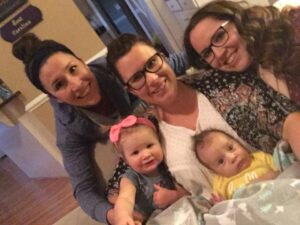
 study, whereby they try to read a chapter of the Bible each week and then they have text discussions about it. The Bible is so much more than the words on paper. There are much deeper meetings, when people take the time to search them out. Lindsay says that these have been rich discussions in which they have both learned so much. The Holy Spirit reveals different things to each of them, which is of course, awesome!! Lindsay says, “She is a wonderful sister, daughter, dog mom, aunt, and girlfriend. She is a cut above, a true gem.” I totally agree.
study, whereby they try to read a chapter of the Bible each week and then they have text discussions about it. The Bible is so much more than the words on paper. There are much deeper meetings, when people take the time to search them out. Lindsay says that these have been rich discussions in which they have both learned so much. The Holy Spirit reveals different things to each of them, which is of course, awesome!! Lindsay says, “She is a wonderful sister, daughter, dog mom, aunt, and girlfriend. She is a cut above, a true gem.” I totally agree.
Because the Hadlock family is spread out over Wyoming now, they have decided to meet in Wheatland this year for Kellie’s birthday lunch. Kellie really misses her sisters, Jessi and Lindsay, so her dad, Chris Hadlock suggested that we all meet in Wheatland which is the same amount of time away for each family. They plan to go this Saturday and have lunch at Guadalajara and have her little party for our family there. Kellie is so excited. Her whole family will be there, including her brother Ryan and his family. Then, the family here in Casper will have another birthday dinner for her on Sunday night. Kellie has chosen her favorite fried chicken, mashed potatoes and gravy, and corn. In the Hadlock family everyone gets to choose a birthday meal, or they can choose to go out to whatever restaurant. This year will be special for Kellie because the other girls could 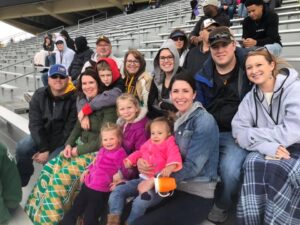
 not come up for her birthday. So she basically gets two parties…well, actually three, because her boyfriend, Tim Thompson is in town from Gillette to take her out for dinner today. Kellie gets to feel really special this year, with all this attention, and I think she has earned it, because she is a very special girl. Today is Kellie’s birthday. Happy birthday Kellie!! Have a great day!! We love you!!
not come up for her birthday. So she basically gets two parties…well, actually three, because her boyfriend, Tim Thompson is in town from Gillette to take her out for dinner today. Kellie gets to feel really special this year, with all this attention, and I think she has earned it, because she is a very special girl. Today is Kellie’s birthday. Happy birthday Kellie!! Have a great day!! We love you!!
 Every day, in various locations, we could find ourselves in relatively close proximity to any number of known criminals. I suppose that if one were to let oneself, that could be a source of concern, but it is also good to know that often, the criminal element in our midst is trying just as hard not to be seen, as we are not to know they are there.
Every day, in various locations, we could find ourselves in relatively close proximity to any number of known criminals. I suppose that if one were to let oneself, that could be a source of concern, but it is also good to know that often, the criminal element in our midst is trying just as hard not to be seen, as we are not to know they are there.
Many of those criminals are not seriously dangerous, but some are so dangerous that it was decided that the public needed to not only be aware of them, but needed to help in spotting this dangerous element, so they could be taken off our streets. The Federal Bureau of Investigation (FBI) made the decision in 1949 to institute what is now well known as the “Ten Most Wanted Fugitives” list in an effort to publicize particularly dangerous fugitives. The creation of the program arose out of a wire service news story in 1949 about the “toughest guys” the FBI wanted to capture. Once out there, like many new ideas, awareness grew, and a need was realized. The wire service story drew so much public attention that the “Ten Most Wanted” list was given the okay by J Edgar Hoover the following year.
Since its debut, the list has been responsible for the capture of hundreds of the criminals included on the list. To add to the success, more than 150 of those apprehended or located were a direct result of tips from the public. To start the list and in subsequent lists, the Criminal Investigative Division (CID) of the FBI asks all fifty-six field offices to submit candidates for inclusion on the list. Once these are received, the CID in association with the Office of Public and Congressional Affairs reviews then and proposes finalists for approval of by the FBI’s Deputy Director. The criterion for selection is simple. The criminal must have a lengthy record and current pending charges that make him or her particularly dangerous. In addition, the FBI must believe that “the publicity attendant to placement on the list will assist in the apprehension of the fugitive.”

Once on the list, there is generally only two ways to get off the list…die or to be captured. There have only been a handful of cases where a fugitive has been removed from the list because they no longer were a particularly dangerous menace to society. I suppose an older fugitive, known to have an illness or dementia would qualify. The list usually consists of men, but there have actually been ten women who have appeared on the Ten Most Wanted list. The first woman was Ruth Eisemann-Schier was the first, listed in 1968. The current list has a little room, I see.
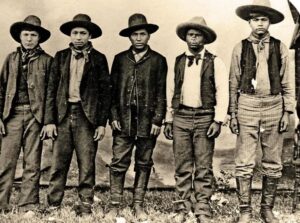 The Rufus Buck Gang was a multiracial group of African American and Native American outlaws, notorious for a series of murders, robberies, and assaults. They were a brutal bunch, and they considered anyone fair game…men, women, and children. Headed up by Rufus Buck, the gang also consisted of Lucky Davis, Maoma July, Lewis Davis, and Sam Sampson. The men had no scruples and no respect for life. Their criminal activities took place in the Indian Territory of the Arkansas-Oklahoma area from July 30, 1895, through August 4, 1896.
The Rufus Buck Gang was a multiracial group of African American and Native American outlaws, notorious for a series of murders, robberies, and assaults. They were a brutal bunch, and they considered anyone fair game…men, women, and children. Headed up by Rufus Buck, the gang also consisted of Lucky Davis, Maoma July, Lewis Davis, and Sam Sampson. The men had no scruples and no respect for life. Their criminal activities took place in the Indian Territory of the Arkansas-Oklahoma area from July 30, 1895, through August 4, 1896.
Before they started their crime spree, the gang began while staying in Okmulgee, Oklahoma, by building up a small stockpile of weapons. Then, on 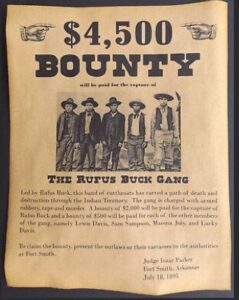 July 30, 1895, they killed Deputy US Marshal John Garrett. With the lawman out of the way, they began holding up various stores and ranches in the Fort Smith area over the next two weeks. Then, the brutality began. During one robbery, a salesman named Callahan, after being robbed, was offered a chance to escape…if he could outrun the gang. Callahan was an elderly man, and they thought an easy mark, but he successfully escaped, which angered the men, so the gang killed his assistant in frustration. At least two female victims who were raped by the gang died of their injuries.
July 30, 1895, they killed Deputy US Marshal John Garrett. With the lawman out of the way, they began holding up various stores and ranches in the Fort Smith area over the next two weeks. Then, the brutality began. During one robbery, a salesman named Callahan, after being robbed, was offered a chance to escape…if he could outrun the gang. Callahan was an elderly man, and they thought an easy mark, but he successfully escaped, which angered the men, so the gang killed his assistant in frustration. At least two female victims who were raped by the gang died of their injuries.
In all, the gang, Killed Deputy US Marshal John Garrett. Then on July 31, 1895, they came across a white man and his daughter in a wagon, the gang held the man at gunpoint and took the girl. They killed a black boy and beat Ben Callahan until they mistakenly believed he was dead, then took Callahan’s boots, money, and saddle. They robbed the country stores of West and J Norrberg at Orket, Oklahoma. They murdered two white women and a 14-year-old girl. Then, on August 4th, they raped a Mrs Hassen near Sapulpa, Oklahoma. Hassen and two of three other female victims of the gang…a Miss Ayres and an Indian girl 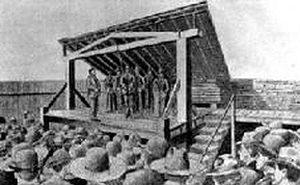 near Sapulpa, all died; and a fourth victim, Mrs Wilson recovered from her injuries. Continuing attacks on both local settlers and Creek indiscriminately, the gang was finally captured outside Muskogee by a combined force of lawmen and Indian police of the Creek Light Horse, led by Marshal S Morton Rutherford, on August 10. While the Creek Light Horse forces wanted to hold the gang for trial, the men were brought before “Hanging” Judge Isaac Parker. The judge twice sentenced them to death, the first sentence not being carried out pending an ultimately unsuccessful appeal to the Supreme Court. They were hanged on July 1, 1896 at 1pm at Fort Smith.
near Sapulpa, all died; and a fourth victim, Mrs Wilson recovered from her injuries. Continuing attacks on both local settlers and Creek indiscriminately, the gang was finally captured outside Muskogee by a combined force of lawmen and Indian police of the Creek Light Horse, led by Marshal S Morton Rutherford, on August 10. While the Creek Light Horse forces wanted to hold the gang for trial, the men were brought before “Hanging” Judge Isaac Parker. The judge twice sentenced them to death, the first sentence not being carried out pending an ultimately unsuccessful appeal to the Supreme Court. They were hanged on July 1, 1896 at 1pm at Fort Smith.
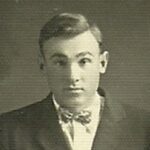
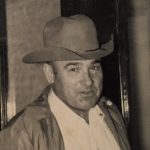 My husband’s grandfather, Andrew Carl Schulenberg was an interesting character. Born on March 12, 1906, to Max Heinrich Johann Carl Schulenberg and Julia Marie Doll. His dad was born in Oldenburg, Lower Saxony, Germany, and in those days, children were often given multiple middle names. I have always found that to be of interest, as I used to think that pretty much only royal children were given multiple middle names. It actually isn’t all that uncommon and many children today have multiple middle names. Max had immigrated to America by the time he met Julia, and they were married in Blair, Nebraska. Their oldest son, Andrew was born in Herman, Nebraska, as were his sisters Anna and Claudine. The rest of Andrew’s nine siblings were born in Forsyth, Montana.
My husband’s grandfather, Andrew Carl Schulenberg was an interesting character. Born on March 12, 1906, to Max Heinrich Johann Carl Schulenberg and Julia Marie Doll. His dad was born in Oldenburg, Lower Saxony, Germany, and in those days, children were often given multiple middle names. I have always found that to be of interest, as I used to think that pretty much only royal children were given multiple middle names. It actually isn’t all that uncommon and many children today have multiple middle names. Max had immigrated to America by the time he met Julia, and they were married in Blair, Nebraska. Their oldest son, Andrew was born in Herman, Nebraska, as were his sisters Anna and Claudine. The rest of Andrew’s nine siblings were born in Forsyth, Montana.
After a hunting accident took his right leg, Andy had a true peg leg for the rest of his life. Maybe it was the fact that he was only in his teens when it happened, or maybe it was just his own determined personality, but Andy did not let a “little thing” like an amputated leg turn him into an invalid. He went forward with his life…after about a year in the hospital, that is. And while he really didn’t like guns much after that, he was still capable of using one if needed. And actually, went on to become the sheriff of Rosebud County, Montana, and did it without a gun. I suppose it might have seemed a little bit like Sheriff Andy Taylor on the Andy Griffith Show, but I can’t say that Forsyth, or Rosebud County, was a tame as Mayberry was. Andy took it all in stride, worked with multiple agencies over his years as sheriff, and handled the Indian nation with mutual respect and grace. That was the reason they worked so well with him.
I first met Andy at a family reunion when my girls were about 6 and 5 years old. He was, of course their great 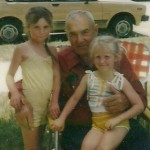
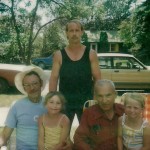 grandfather. And he seemed bigger than life. He was a tall…very tall man, but then I’m short, and maybe not a good judge of height. Still, I would guess 6 foot 3 inches, at last. His son, Uncle Butch Schulenberg could probably tell me for sure. Nevertheless, as big as he was, he took the time to build two small chairs for my girls, chairs they still love to this day. He was excited to meet them, and they were excited to meet him. I will always be glad we had that time with him. Today is the 117th anniversary of Grandpa Andy Schulenberg’s birth. Happy birthday in Heaven, Grandpa. We love and miss you very much.
grandfather. And he seemed bigger than life. He was a tall…very tall man, but then I’m short, and maybe not a good judge of height. Still, I would guess 6 foot 3 inches, at last. His son, Uncle Butch Schulenberg could probably tell me for sure. Nevertheless, as big as he was, he took the time to build two small chairs for my girls, chairs they still love to this day. He was excited to meet them, and they were excited to meet him. I will always be glad we had that time with him. Today is the 117th anniversary of Grandpa Andy Schulenberg’s birth. Happy birthday in Heaven, Grandpa. We love and miss you very much.
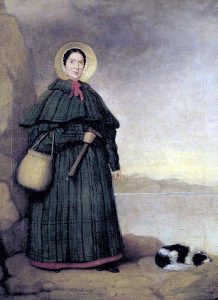 Few kids know what they want to do with their lives by the time they are ten or twelve, but twelve-year-old British fossil collector and paleontologist Mary Anning already knew. She was the child of a poor family, and she made her first archeological discovery the year she turned twelve. Anning searched for fossils in the area’s Blue Lias cliffs, particularly during the winter months when landslides exposed new fossils that had to be collected quickly before they were lost to the sea. One day, while fossil-hunting on the cliffs of Lyme Regis, England, Anning found what was believed to be the first dinosaur skeleton…an ichthyosaur, a prehistoric reptile.
Few kids know what they want to do with their lives by the time they are ten or twelve, but twelve-year-old British fossil collector and paleontologist Mary Anning already knew. She was the child of a poor family, and she made her first archeological discovery the year she turned twelve. Anning searched for fossils in the area’s Blue Lias cliffs, particularly during the winter months when landslides exposed new fossils that had to be collected quickly before they were lost to the sea. One day, while fossil-hunting on the cliffs of Lyme Regis, England, Anning found what was believed to be the first dinosaur skeleton…an ichthyosaur, a prehistoric reptile.
Prior to Anning’s discovery, people didn’t believe that anima extinction was a real thing. Anning was up against some big obstacles in the field of science, because of her gender, so it was amazing that her findings were given any credence at all. In addition, her social class…a big thing in those days, also made it difficult for her to fully participate in the scientific community of 19th-century Britain. Nevertheless, she read as much scientific literature as she could get her hands on and went on to become a renowned fossil-hunter and dealer, often risking her life in the face of landslides and daunting cliffs. She was not going to let her gender or social class stop her from using her mind to its fullest capacity. She wanted to learn more and discover more, and she was determined to do so. Anning did get some of the recognition she deserved when the great Stephen Jay Gould, who was the most beloved popular science writer of all time, called her “probably the most important unsung (or inadequately sung) collecting force in the history of paleontology.” To say the least, her work started a fundamental shift in scientific thinking about prehistoric life in the early 19th century.
Mary Anning was born on May 21, 1799. She struggled financially for much of her life. Her family was poor. Her father, a cabinetmaker, died when she was eleven. Anning, herself, nearly died in 1833 during a landslide that killed her dog, Tray. Working in landslide conditions was dangerous, but it was often her only chance to make her discoveries. Nevertheless, this English fossil collector, dealer, and paleontologist, went on to become known around the world for important finds she made in Jurassic marine fossil beds in the cliffs along the English Channel. In addition to the ichthyosaur, she found the first two more complete plesiosaur skeletons, the first pterosaur skeleton located outside Germany, and important fish fossils. Her observations also played a key role in the discovery that “coprolites, known as bezoar stones at the time, were fossilized feces. She also discovered that belemnite fossils contained fossilized ink sacs like those of modern cephalopods.” When geologist Henry De la Beche painted Duria Antiquior, the first widely circulated pictorial representation of a scene from prehistoric life derived from fossil reconstructions, he based it largely on fossils Anning had found, and sold prints of it for her benefit. A wonderful act of kindness.
Anning was not able to fully participate in the scientific community of 19th-century Britain, who were mostly Anglican gentlemen. Nevertheless, she became well known in geological circles in Britain, Europe, and America, and was consulted on issues of anatomy, as well as about collecting fossils. Still, as a woman, she was not eligible to join the Geological Society of London and she did not always receive full credit for her scientific 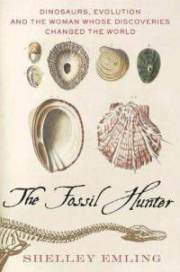 contributions…and incredible injustice. As a result, she wrote in a letter, “The world has used me so unkindly, I fear it has made me suspicious of everyone.” There was only one scientific writing of hers that was published in her lifetime. It appeared in the Magazine of Natural History in 1839. It was simply an extract from a letter that Anning had written to the magazine’s editor questioning one of its claims. It seems surprising to me that they printed that at all.
contributions…and incredible injustice. As a result, she wrote in a letter, “The world has used me so unkindly, I fear it has made me suspicious of everyone.” There was only one scientific writing of hers that was published in her lifetime. It appeared in the Magazine of Natural History in 1839. It was simply an extract from a letter that Anning had written to the magazine’s editor questioning one of its claims. It seems surprising to me that they printed that at all.
After her death on March 9, 1847, her unusual life story finally began to gain the interest it deserved. An uncredited author in All the Year Round, edited by Charles Dickens, wrote of her in 1865 that “[t]he carpenter’s daughter has won a name for herself, and has deserved to win it.” It has often been claimed that her story was the inspiration for the 1908 tongue-twister “She sells seashells on the seashore” by Terry Sullivan, but that has not been confirmed. In 2010, a full 163 years after her death, the Royal Society finally included Anning in a list of the ten British women who have most influenced the history of science. Rather late in all reality.
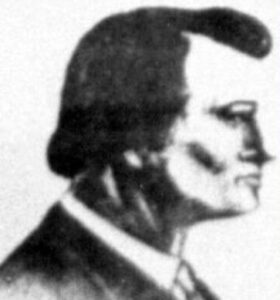 Joseph Alfred “Jack” Slade was a stagecoach and Pony Express superintendent early in his life. He was instrumental in the opening of the American West, and he was also the archetype of the Western gunslinger. Slade was born on January 22, 1831, in Carlyle, Illinois, the son of Illinois politician Charles Slade and Mary Dark (Kain) Slade. Slade’s life started out decent. He served in the US Army that occupied Santa Fe, 1847-1848, during the Mexican War. His father died in 1834, Slade’s mother married Civil War General Elias Dennis in 1838, when Slade was just seven years old.
Joseph Alfred “Jack” Slade was a stagecoach and Pony Express superintendent early in his life. He was instrumental in the opening of the American West, and he was also the archetype of the Western gunslinger. Slade was born on January 22, 1831, in Carlyle, Illinois, the son of Illinois politician Charles Slade and Mary Dark (Kain) Slade. Slade’s life started out decent. He served in the US Army that occupied Santa Fe, 1847-1848, during the Mexican War. His father died in 1834, Slade’s mother married Civil War General Elias Dennis in 1838, when Slade was just seven years old.
In about 1857, Slade married a woman named Maria Virginia. Her maiden name is unknown. In the 1850s, he was a freighting teamster and wagon master along the Overland Trail, and then became a stagecoach driver in Texas, around 1857-1858. After years on the job, Slade became a stagecoach division superintendent along the Central Overland route for Hockaday and Company from 1858–1859, and when it was purchased, he worked for its successors Jones, Russell and Company in 1859 and Central Overland, California and Pike’s Peak Express Company from 1859 to 1862. With the latter concern, he also helped launch and operate the Pony Express in 1860-61. These were critical lines of communication between the East and California. As superintendent, he enforced order and assured reliable cross-continental mail service, maintaining contact between Washington DC, and California on the eve of Civil War.
Slade was know as a strict, and even ferocious boss. While division superintendent, he shot and killed Andrew Ferrin, one of his subordinates, who was hindering the progress of a freight train, in May 1859. This type of situation was rare for the time, but it served to build his reputation as a gunslinger. In March 1860, Slade was ambushed and left for dead by Jules Beni, who was a corrupt stationkeeper at Julesburg, Colorado, and whom Slade had removed. Remarkably, Slade survived, and in August 1861, Beni was killed by Slade’s men after 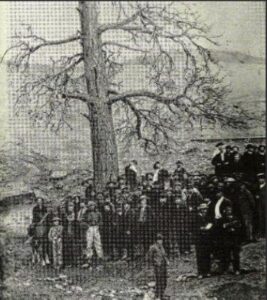 ignoring Slade’s warning to stay out of his territory.
ignoring Slade’s warning to stay out of his territory.
Slade’s temper and the reputation that came with it, combined with a drinking problem, caused his downfall. After he was fired by the Central Overland for drunkenness in November 1862, Slade crossed paths with the Virginia City Vigilance Committee, which was composed of honest, determined citizens, including bankers, storekeepers, miners, stockbrokers, and other citizens of all backgrounds, who had decided to take the law into their own hands and combat lawlessness in Virginia City. Slade found himself in Virginia City, Montana on a drunken spree. After being arrested, he was lynched by local vigilantes on March 10, 1864, for disturbing the peace. Of all the killings he was guilty of, Slade was lynched for disturbing the peace. Unbelievable, but the truth, nevertheless. He was buried in Salt Lake City, Utah, on July 20, 1864.

 My grandniece, Manuela Ortiz joined our family on July 18, 2021, when she married my grandnephew, James Renville. Manuela is such a happy person, and she brings so much sunshine into the lives of our family. She is an excellent dancer, and James is learning to dance too. They have even done some videos of them dancing and placed them online. Not everyone has the coordination to do things like Salsa dancing, but Manuela certainly does…and I’ll have to leave that to her. It’s best that way.
My grandniece, Manuela Ortiz joined our family on July 18, 2021, when she married my grandnephew, James Renville. Manuela is such a happy person, and she brings so much sunshine into the lives of our family. She is an excellent dancer, and James is learning to dance too. They have even done some videos of them dancing and placed them online. Not everyone has the coordination to do things like Salsa dancing, but Manuela certainly does…and I’ll have to leave that to her. It’s best that way.
Speaking fluent Spanish makes Manuela as asset to Wyoming  Housing Network, where she is a housing counselor. When Manuela first came to America from Columbia, it was with the intent to study English, so that when she went back home, she could move up in her company. Things changed as time went by, and before long, she knew that she wanted to immigrate to America permanently. That was in the works, when she met her future husband, my grandnephew, James Renville. They met in 2019 and have been inseparable ever since.
Housing Network, where she is a housing counselor. When Manuela first came to America from Columbia, it was with the intent to study English, so that when she went back home, she could move up in her company. Things changed as time went by, and before long, she knew that she wanted to immigrate to America permanently. That was in the works, when she met her future husband, my grandnephew, James Renville. They met in 2019 and have been inseparable ever since.
Recently, Manuela decided to write an e-book called The Stages of an Immigrant: Stories of an Immigrant. In her book, she tells about her own experiences as she navigated the immigration system of the United States. We are all very proud of Manuela and her journey to become an American citizen the right way.
This past Christmas, Manuela got to go back to Columbia to visit her family for the holidays. Having been here when Covid hit, she hasn’t been able to go back home, and that has been so hard. Manuela has embraced her 
 Wyoming family, and totally loves her Wyoming Cowboy (her husband, James), but this was a special trip and very fun for her. Aside from the climate difference, there are many different customs that go along with the holidays too. The decorations alone are very different. I’m sure that as the years go by, Manuela will incorporate some of her family’s traditions into Christmases here and maybe some of ours in future Christmases there. Today is Manuela’s birthday. Happy birthday Manuela!! Have a great day!! We love you!!
Wyoming family, and totally loves her Wyoming Cowboy (her husband, James), but this was a special trip and very fun for her. Aside from the climate difference, there are many different customs that go along with the holidays too. The decorations alone are very different. I’m sure that as the years go by, Manuela will incorporate some of her family’s traditions into Christmases here and maybe some of ours in future Christmases there. Today is Manuela’s birthday. Happy birthday Manuela!! Have a great day!! We love you!!
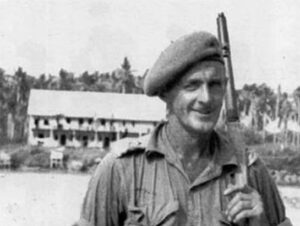 Soldiers everywhere have varied backgrounds, but maybe more so during World War I and World War II, as well as wars in which there was a draft. Robert Kerr “Jock” McLaren was a veterinarian by trade, but during his service with the Second Australian Imperial Force, he also became a feared guerrilla fighter who ran missions against the Japanese. I suppose that, while a veterinarian doesn’t work on humans, possessing certain skills would be important in certain situations. McLaren spent countless hours, days, and weeks in the jungles, and after one such assignment, his medical skills suddenly became urgently needed…on himself. McLaren found himself faced with surgery on himself, or certain death. So, in order to save his own life, McLaren set about to remove his own appendix…in the jungle, with a pen knife, two spoons, and coconut fibers.
Soldiers everywhere have varied backgrounds, but maybe more so during World War I and World War II, as well as wars in which there was a draft. Robert Kerr “Jock” McLaren was a veterinarian by trade, but during his service with the Second Australian Imperial Force, he also became a feared guerrilla fighter who ran missions against the Japanese. I suppose that, while a veterinarian doesn’t work on humans, possessing certain skills would be important in certain situations. McLaren spent countless hours, days, and weeks in the jungles, and after one such assignment, his medical skills suddenly became urgently needed…on himself. McLaren found himself faced with surgery on himself, or certain death. So, in order to save his own life, McLaren set about to remove his own appendix…in the jungle, with a pen knife, two spoons, and coconut fibers.
McLaren was just a teenager during World War I, when he served with the 51st (Highland) Division of the British Army. Because he was so young then, it’s unlikely that he saw combat on the Western Front. Nevertheless, his name is found on the rolls from his division’s time in France in 1918. That made people wonder if he participated in fighting during the Spring Offensive. Following the war, McLaren returned to 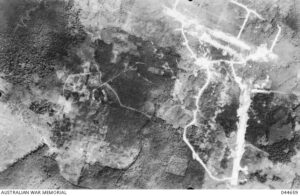 Scotland and completed training to become a veterinarian. He then moved to Queensland, Australia, where he worked as a veterinary officer in Bundaberg.
Scotland and completed training to become a veterinarian. He then moved to Queensland, Australia, where he worked as a veterinary officer in Bundaberg.
When World War II began, McLaren volunteered for the Second Australian Imperial Force. McLaren, 39 years old at the time, was assigned to the 2/10th Australian Field Workshops, 8th Australian Division and stationed in Singapore. McLaren spent time in a POW camp and escaped along with two other soldiers. After being tortured and faced with a firing squad, the trio were ultimately returned to their cells. McLaren, along with 1,000 British and Australian soldiers, was later transferred to Borneo and held at the Sandakan camp. He made plans to escape again, this time with a Chinese POW named Johnny Funk. The escape took the men to the large Philippine Island of Mindanao, where they joined the resistance led by American Reserve Officer, Lt. Col. Wendell Fertig. He was later given the chance to return to Australia, but chose to remain a guerrilla.
It was during his time as a guerrilla that McLaren’s appendicitis attack occurred. During one patrol as a 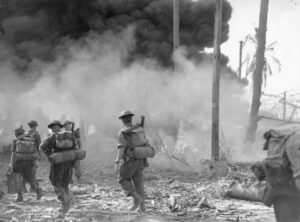 guerrilla, McLaren developed a severe case of appendicitis. He knew enough to know that he was going to have to treat himself, or he would die. So, he performed surgery with just a penknife and two spoons. He stitched the incision with coconut fibers. When asked about the act years later, he said, “It was hell, but I came through alright.” A modest remark for such a remarkable act…in the middle of a Philippine jungle in 1944, without any anesthetic and with only the use of a mirror to see. The operation took 4½ hours. Still, as he said he came through it alright, and he would not be that last person to do surgery on themselves. Nevertheless…remarkable.
guerrilla, McLaren developed a severe case of appendicitis. He knew enough to know that he was going to have to treat himself, or he would die. So, he performed surgery with just a penknife and two spoons. He stitched the incision with coconut fibers. When asked about the act years later, he said, “It was hell, but I came through alright.” A modest remark for such a remarkable act…in the middle of a Philippine jungle in 1944, without any anesthetic and with only the use of a mirror to see. The operation took 4½ hours. Still, as he said he came through it alright, and he would not be that last person to do surgery on themselves. Nevertheless…remarkable.
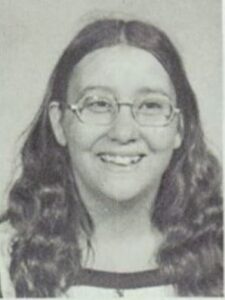
 My cousin, Darla Stanko passed away on February 26, 2023, at 63 just years old. As I think of Darla, I remember her laugh, which was just like her mother’s. It was sweet and a little shy, but when they laughed…you laughed, because their laugh was contagious. As kids, we would all go down in Grandma Byer’s basement to play, while the grownups visited upstairs. Grandma’s basement was a little creepy and worked well as a “haunted” house…if the kids liked that sort of thing. Some did and some didn’t. I preferred other games. I think Darla did too. She had asthma and scary stuff could trigger things.
My cousin, Darla Stanko passed away on February 26, 2023, at 63 just years old. As I think of Darla, I remember her laugh, which was just like her mother’s. It was sweet and a little shy, but when they laughed…you laughed, because their laugh was contagious. As kids, we would all go down in Grandma Byer’s basement to play, while the grownups visited upstairs. Grandma’s basement was a little creepy and worked well as a “haunted” house…if the kids liked that sort of thing. Some did and some didn’t. I preferred other games. I think Darla did too. She had asthma and scary stuff could trigger things.
As kids do, we all grew up…quicker than we would ever have dreamed possible. Before long, babies were coming along. I remember talking to Darla once. She told me that without a doubt, the best thing she ever did was JeanAnn, and of that I have no doubt. For a mom to look at the beautiful little baby they have just given birth to…there is no greater honor. Kids are a big part of our lives, and games are a part of kids. JeanAnn told me about the times she and her mom played cards. Their favorite game was Speed…which is a high drama card matching game for two players. It was perfect for them.
The other thing that JeanAnn and her mom loved to do was to spend time jumping on the trampoline in their yard. I can just picture it now, a summer evening in the back yard, just the two girls, jumping and giggling the hours away. Of course, there was also their dog, Nelly with them too. Now Nelly was a different sort of dog. She was very gentle with JeanAnn, but then she was JeanAnn’s guard dog. She was also gentle with Darla too…except for that one time. JeanAnn could make Nelly mad and then point at a new person, and Nelly would go get that person. That was all well and good…until JeanAnn did that to her mom. My guess is that JeanAnn had no idea what was about to take place. Darla saw it coming, and she jumped on the furniture to get away from the guard dog that was now hot on her trail. She almost knocked herself out jumping down. JeanAnn 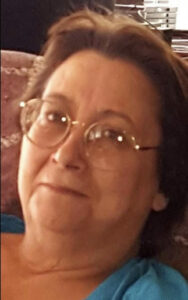
 says, “It was great” and maybe it was…for her anyway. Darla…maybe not so much, but I’m sure she laughed about it later.
says, “It was great” and maybe it was…for her anyway. Darla…maybe not so much, but I’m sure she laughed about it later.
Now, for me, possibly the funniest story about Darla’s life was the “fateful” trip to Denver. Darla decided to take her daughter to Denver, and to take her mom, my Aunt Delores Johnson with them. She needed a “navigator” and while I can’t picture my Aunt Dee in that capacity, maybe Darla thought map reading was like breathing…anyone could do it. My thought is, “Have you met your mother?” Anyway, off they went, and to make a long story short, they ended up on a one street in rush hour traffic, going the wrong way!!” Oh yes, that’s the Aunt Dee I know, and I can totally picture that whole situation…once I can stop laughing!!

